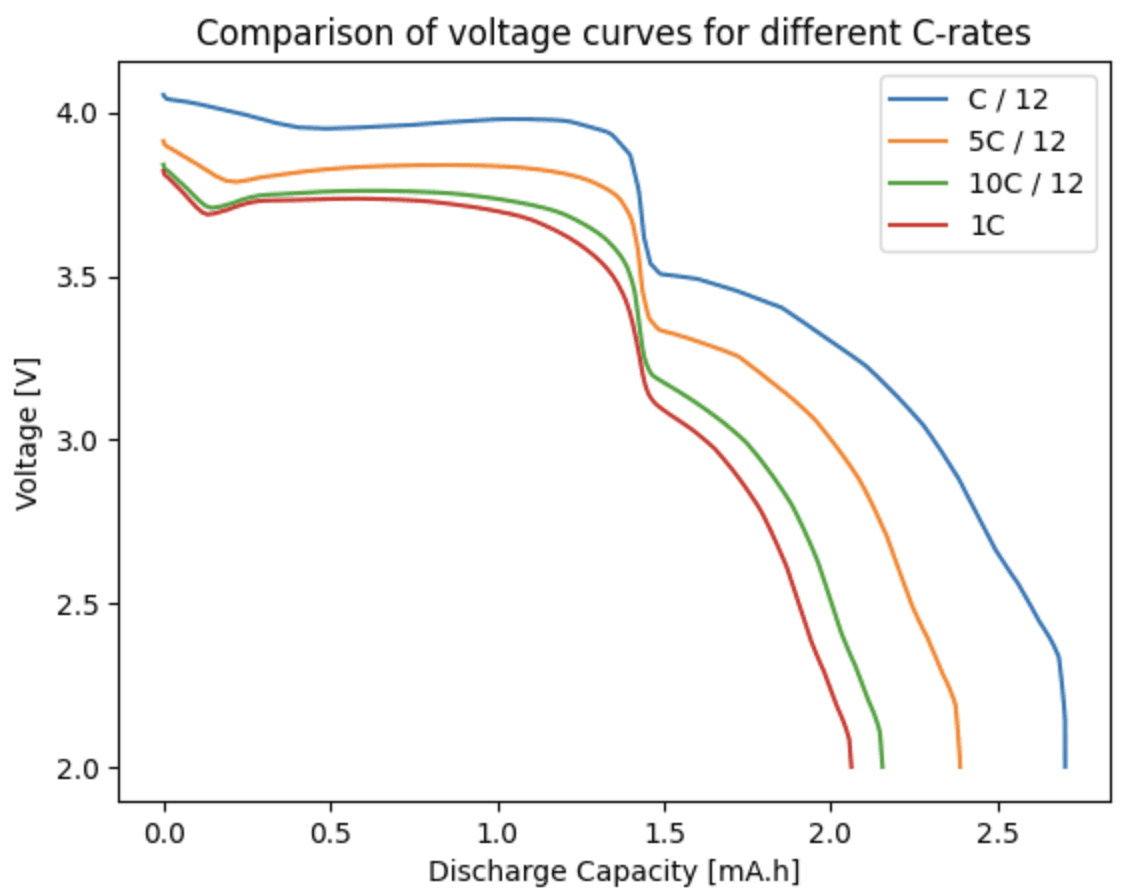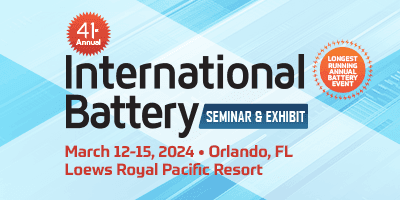Apr 1, 2025
Apr 1, 2025
Electrode Essentials: Or Why We Don’t Say Cathode and Anode
Electrode Essentials: Or Why We Don’t Say Cathode and Anode

In our previous post, we explored the basics of lithium-ion batteries: what are the components and how they operate during charge and discharge. Today, we’ll dive deeper into one of the key components of a battery: the electrodes. Electrodes are the component that actually stores the energy, so understanding them is key to grasping how batteries store and release energy. Let’s break down what they are and why the terminology used to describe them is not as straightforward as it seems at a first glance.
As a quick recap, the electrodes for lithium-ion batteries are porous thin layers made of materials that can store lithium. When the battery is fully charged, all lithium is in the negative electrode, and moves towards the positive electrode during discharge, releasing energy in the process. Electrodes are not only made of the particles that can store lithium (called active materials) but also include the binder, which holds the electrode together, and other additives that improve its performance, for example increasing the electronic conductivity of the electrode.
Inside a lithium-ion battery, we have two electrodes:
Positive Electrode (aka Cathode): This electrode has a higher open-circuit potential and therefore lithium ions move towards it during the discharge process. The active material in positive electrodes is typically a lithium-metal oxide material (e.g., lithium cobalt oxide or lithium iron phosphate), even though there is a lot of ongoing research in finding novel materials that can improve battery performance and lifetime.
Negative Electrode (aka Anode): This electrode has a lower open-circuit potential and therefore lithium ions move away from it during discharge. The active material is usually graphite, sometimes with the addition of some silicon or silicon oxide. Silicon is well-known for its higher intercalation capacity, which has the potential to yield much higher energy densities. However, its large expansion when lithium intercalates (up to four times its initial volume) causes big issues in terms of battery life, and therefore it is another big ongoing research area.
As you probably have noticed both in Ionworks and PyBaMM we use the terms “positive electrode” and “negative electrode” instead of “cathode” and “anode”, which are widely used in the literature. Even though the equivalence between terms might seem straightforward, it is not so clear when talking about lithium-ion batteries. The terms “anode” and “cathode” (which were coined by William Whewell, at the request of Michael Faraday) stem from the direction in which the current flows in devices like electrolytic cells: current departs from the cathode and enters the anode. For single-use batteries, this definition is straightforward, but for rechargeable batteries things get muddy during charge: the “anode” behaves like a cathode and the “cathode” behaves like the anode.
Despite the well-established convention for anode/cathode, it is not correct from an electrochemical point of view, and thus we follow the positive/negative electrode nomenclature instead: the positive electrode has the higher open-circuit potential while the negative electrode has the lower one. And that conveniently leads us to another extremely important concept in lithium-ion batteries: the open-circuit potential. But it will have to wait until our next blog post.
In our previous post, we explored the basics of lithium-ion batteries: what are the components and how they operate during charge and discharge. Today, we’ll dive deeper into one of the key components of a battery: the electrodes. Electrodes are the component that actually stores the energy, so understanding them is key to grasping how batteries store and release energy. Let’s break down what they are and why the terminology used to describe them is not as straightforward as it seems at a first glance.
As a quick recap, the electrodes for lithium-ion batteries are porous thin layers made of materials that can store lithium. When the battery is fully charged, all lithium is in the negative electrode, and moves towards the positive electrode during discharge, releasing energy in the process. Electrodes are not only made of the particles that can store lithium (called active materials) but also include the binder, which holds the electrode together, and other additives that improve its performance, for example increasing the electronic conductivity of the electrode.
Inside a lithium-ion battery, we have two electrodes:
Positive Electrode (aka Cathode): This electrode has a higher open-circuit potential and therefore lithium ions move towards it during the discharge process. The active material in positive electrodes is typically a lithium-metal oxide material (e.g., lithium cobalt oxide or lithium iron phosphate), even though there is a lot of ongoing research in finding novel materials that can improve battery performance and lifetime.
Negative Electrode (aka Anode): This electrode has a lower open-circuit potential and therefore lithium ions move away from it during discharge. The active material is usually graphite, sometimes with the addition of some silicon or silicon oxide. Silicon is well-known for its higher intercalation capacity, which has the potential to yield much higher energy densities. However, its large expansion when lithium intercalates (up to four times its initial volume) causes big issues in terms of battery life, and therefore it is another big ongoing research area.
As you probably have noticed both in Ionworks and PyBaMM we use the terms “positive electrode” and “negative electrode” instead of “cathode” and “anode”, which are widely used in the literature. Even though the equivalence between terms might seem straightforward, it is not so clear when talking about lithium-ion batteries. The terms “anode” and “cathode” (which were coined by William Whewell, at the request of Michael Faraday) stem from the direction in which the current flows in devices like electrolytic cells: current departs from the cathode and enters the anode. For single-use batteries, this definition is straightforward, but for rechargeable batteries things get muddy during charge: the “anode” behaves like a cathode and the “cathode” behaves like the anode.
Despite the well-established convention for anode/cathode, it is not correct from an electrochemical point of view, and thus we follow the positive/negative electrode nomenclature instead: the positive electrode has the higher open-circuit potential while the negative electrode has the lower one. And that conveniently leads us to another extremely important concept in lithium-ion batteries: the open-circuit potential. But it will have to wait until our next blog post.
In our previous post, we explored the basics of lithium-ion batteries: what are the components and how they operate during charge and discharge. Today, we’ll dive deeper into one of the key components of a battery: the electrodes. Electrodes are the component that actually stores the energy, so understanding them is key to grasping how batteries store and release energy. Let’s break down what they are and why the terminology used to describe them is not as straightforward as it seems at a first glance.
As a quick recap, the electrodes for lithium-ion batteries are porous thin layers made of materials that can store lithium. When the battery is fully charged, all lithium is in the negative electrode, and moves towards the positive electrode during discharge, releasing energy in the process. Electrodes are not only made of the particles that can store lithium (called active materials) but also include the binder, which holds the electrode together, and other additives that improve its performance, for example increasing the electronic conductivity of the electrode.
Inside a lithium-ion battery, we have two electrodes:
Positive Electrode (aka Cathode): This electrode has a higher open-circuit potential and therefore lithium ions move towards it during the discharge process. The active material in positive electrodes is typically a lithium-metal oxide material (e.g., lithium cobalt oxide or lithium iron phosphate), even though there is a lot of ongoing research in finding novel materials that can improve battery performance and lifetime.
Negative Electrode (aka Anode): This electrode has a lower open-circuit potential and therefore lithium ions move away from it during discharge. The active material is usually graphite, sometimes with the addition of some silicon or silicon oxide. Silicon is well-known for its higher intercalation capacity, which has the potential to yield much higher energy densities. However, its large expansion when lithium intercalates (up to four times its initial volume) causes big issues in terms of battery life, and therefore it is another big ongoing research area.
As you probably have noticed both in Ionworks and PyBaMM we use the terms “positive electrode” and “negative electrode” instead of “cathode” and “anode”, which are widely used in the literature. Even though the equivalence between terms might seem straightforward, it is not so clear when talking about lithium-ion batteries. The terms “anode” and “cathode” (which were coined by William Whewell, at the request of Michael Faraday) stem from the direction in which the current flows in devices like electrolytic cells: current departs from the cathode and enters the anode. For single-use batteries, this definition is straightforward, but for rechargeable batteries things get muddy during charge: the “anode” behaves like a cathode and the “cathode” behaves like the anode.
Despite the well-established convention for anode/cathode, it is not correct from an electrochemical point of view, and thus we follow the positive/negative electrode nomenclature instead: the positive electrode has the higher open-circuit potential while the negative electrode has the lower one. And that conveniently leads us to another extremely important concept in lithium-ion batteries: the open-circuit potential. But it will have to wait until our next blog post.
In our previous post, we explored the basics of lithium-ion batteries: what are the components and how they operate during charge and discharge. Today, we’ll dive deeper into one of the key components of a battery: the electrodes. Electrodes are the component that actually stores the energy, so understanding them is key to grasping how batteries store and release energy. Let’s break down what they are and why the terminology used to describe them is not as straightforward as it seems at a first glance.
As a quick recap, the electrodes for lithium-ion batteries are porous thin layers made of materials that can store lithium. When the battery is fully charged, all lithium is in the negative electrode, and moves towards the positive electrode during discharge, releasing energy in the process. Electrodes are not only made of the particles that can store lithium (called active materials) but also include the binder, which holds the electrode together, and other additives that improve its performance, for example increasing the electronic conductivity of the electrode.
Inside a lithium-ion battery, we have two electrodes:
Positive Electrode (aka Cathode): This electrode has a higher open-circuit potential and therefore lithium ions move towards it during the discharge process. The active material in positive electrodes is typically a lithium-metal oxide material (e.g., lithium cobalt oxide or lithium iron phosphate), even though there is a lot of ongoing research in finding novel materials that can improve battery performance and lifetime.
Negative Electrode (aka Anode): This electrode has a lower open-circuit potential and therefore lithium ions move away from it during discharge. The active material is usually graphite, sometimes with the addition of some silicon or silicon oxide. Silicon is well-known for its higher intercalation capacity, which has the potential to yield much higher energy densities. However, its large expansion when lithium intercalates (up to four times its initial volume) causes big issues in terms of battery life, and therefore it is another big ongoing research area.
As you probably have noticed both in Ionworks and PyBaMM we use the terms “positive electrode” and “negative electrode” instead of “cathode” and “anode”, which are widely used in the literature. Even though the equivalence between terms might seem straightforward, it is not so clear when talking about lithium-ion batteries. The terms “anode” and “cathode” (which were coined by William Whewell, at the request of Michael Faraday) stem from the direction in which the current flows in devices like electrolytic cells: current departs from the cathode and enters the anode. For single-use batteries, this definition is straightforward, but for rechargeable batteries things get muddy during charge: the “anode” behaves like a cathode and the “cathode” behaves like the anode.
Despite the well-established convention for anode/cathode, it is not correct from an electrochemical point of view, and thus we follow the positive/negative electrode nomenclature instead: the positive electrode has the higher open-circuit potential while the negative electrode has the lower one. And that conveniently leads us to another extremely important concept in lithium-ion batteries: the open-circuit potential. But it will have to wait until our next blog post.


12 Days of Electrochemical Testing
To celebrate the holiday season and the re-release of Ionworks Studio, we featured "12 (business) days of electrochemical testing". Each day we pick a test, give a little bit of information about it, and show you how to run it in Ionworks. 🔋 🎄
Dec 17, 2024


12 Days of Electrochemical Testing
To celebrate the holiday season and the re-release of Ionworks Studio, we featured "12 (business) days of electrochemical testing". Each day we pick a test, give a little bit of information about it, and show you how to run it in Ionworks. 🔋 🎄
Dec 17, 2024


12 Days of Electrochemical Testing
To celebrate the holiday season and the re-release of Ionworks Studio, we featured "12 (business) days of electrochemical testing". Each day we pick a test, give a little bit of information about it, and show you how to run it in Ionworks. 🔋 🎄
Dec 17, 2024


Sodium Ion Battery Model now available in PyBaMM!
This blog post explores the history of SIBs, the intricacies of the new PyBaMM model, and the exciting possibilities it unlocks for the future of energy storage.
Nov 12, 2024


Sodium Ion Battery Model now available in PyBaMM!
This blog post explores the history of SIBs, the intricacies of the new PyBaMM model, and the exciting possibilities it unlocks for the future of energy storage.
Nov 12, 2024


Sodium Ion Battery Model now available in PyBaMM!
This blog post explores the history of SIBs, the intricacies of the new PyBaMM model, and the exciting possibilities it unlocks for the future of energy storage.
Nov 12, 2024


Ionworks Presents at International Battery Seminar
Ionworks CEO Valentin Sulzer presents at the International Battery Seminar in Florida
Mar 12, 2024


Ionworks Presents at International Battery Seminar
Ionworks CEO Valentin Sulzer presents at the International Battery Seminar in Florida
Mar 12, 2024


Ionworks Presents at International Battery Seminar
Ionworks CEO Valentin Sulzer presents at the International Battery Seminar in Florida
Mar 12, 2024


12 Days of Electrochemical Testing
To celebrate the holiday season and the re-release of Ionworks Studio, we featured "12 (business) days of electrochemical testing". Each day we pick a test, give a little bit of information about it, and show you how to run it in Ionworks. 🔋 🎄
Dec 17, 2024


Sodium Ion Battery Model now available in PyBaMM!
This blog post explores the history of SIBs, the intricacies of the new PyBaMM model, and the exciting possibilities it unlocks for the future of energy storage.
Nov 12, 2024
Run your first virtual battery test today
Simulate, iterate, and validate your cell configurations with no lab time required.
Ionworks Technologies Inc. All rights reserved.
Run your first virtual battery test today
Simulate, iterate, and validate your cell configurations with no lab time required.
Run your first virtual battery test today
Simulate, iterate, and validate your cell configurations with no lab time required.
Ionworks Technologies Inc. All rights reserved.
Run your first virtual battery test today
Simulate, iterate, and validate your cell configurations with no lab time required.
Ionworks Technologies Inc. All rights reserved.
